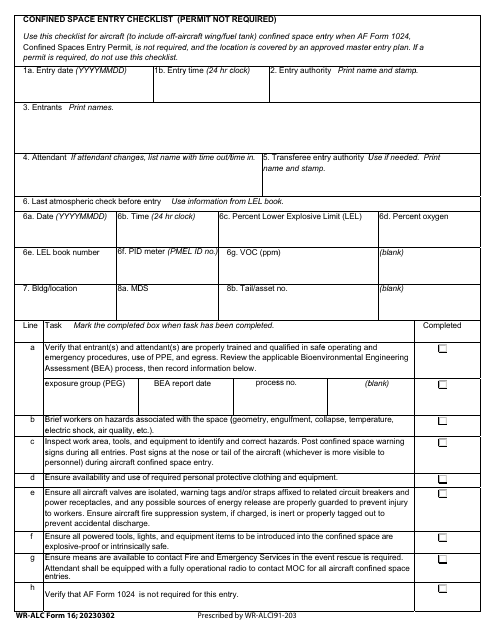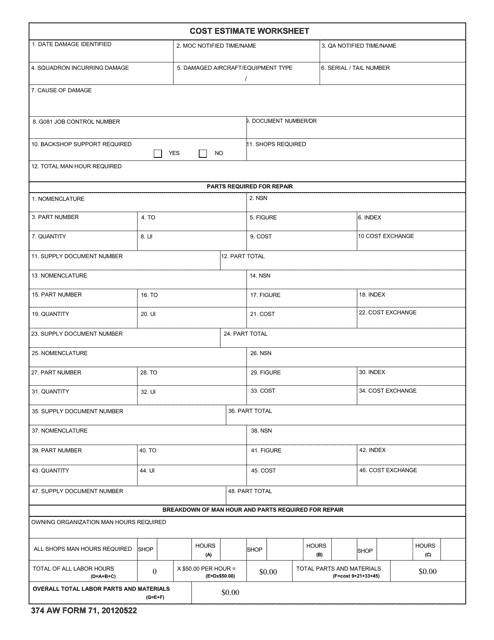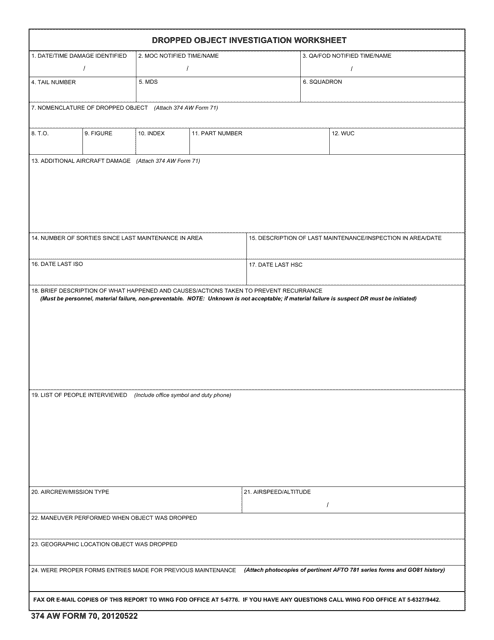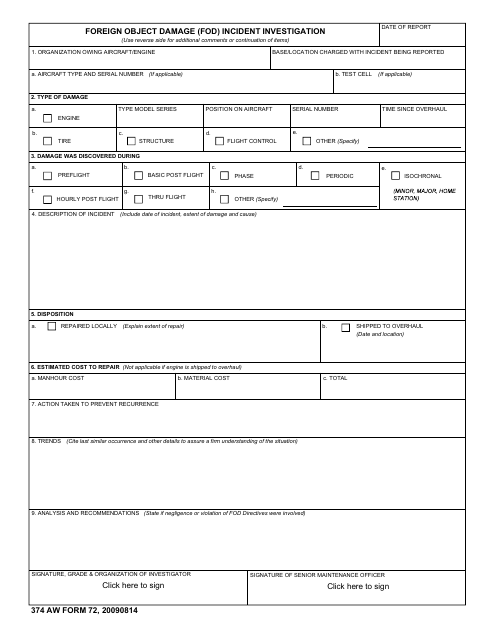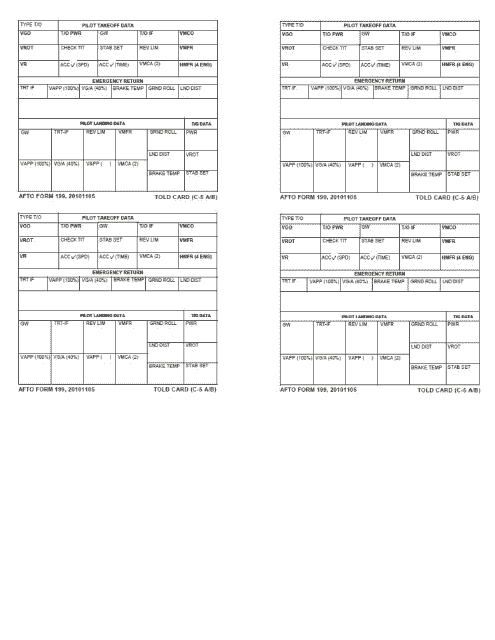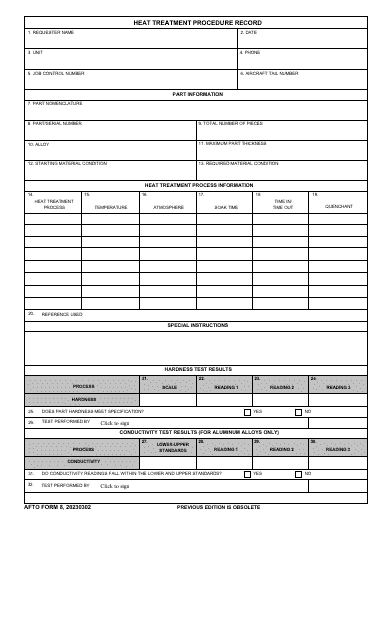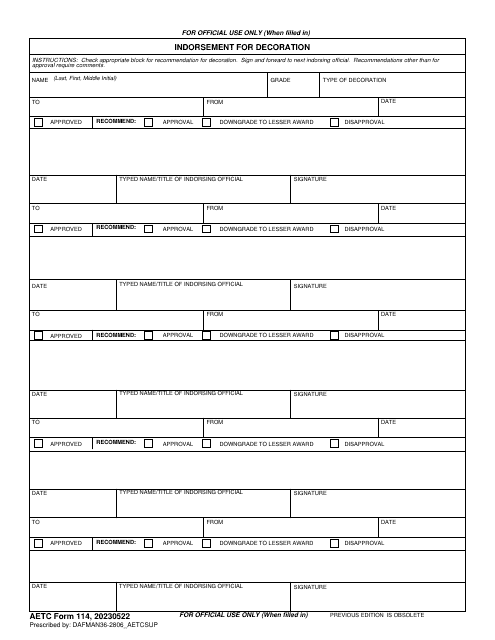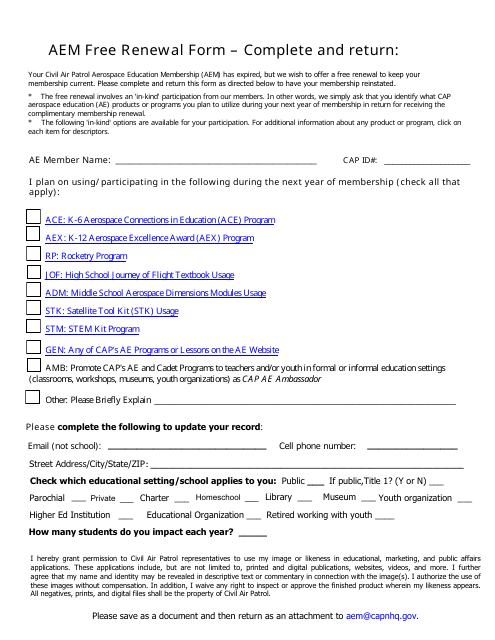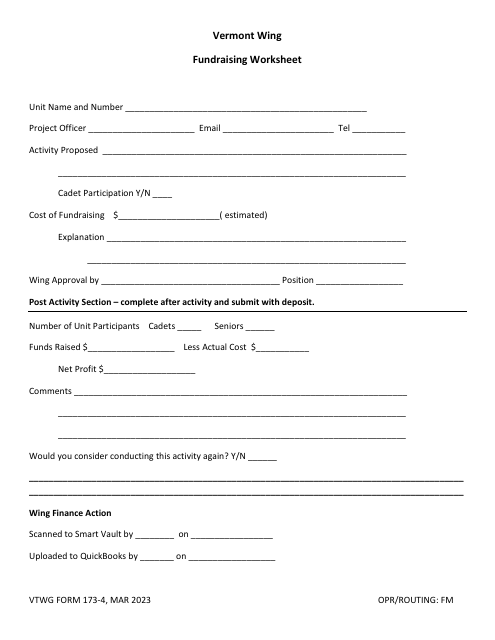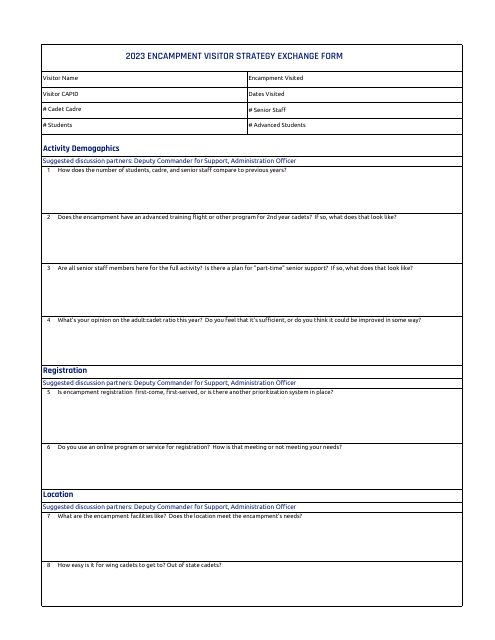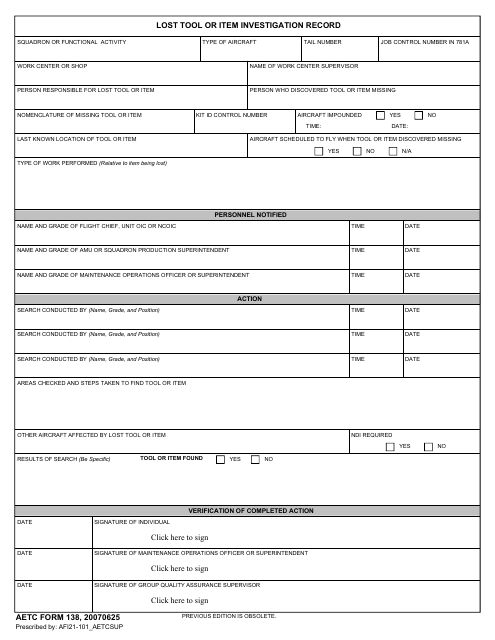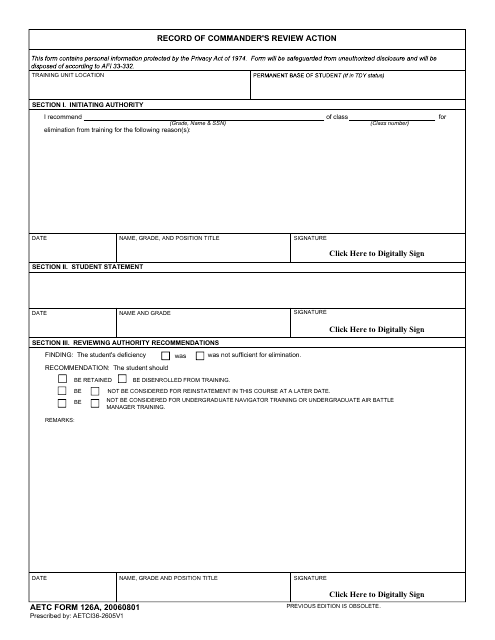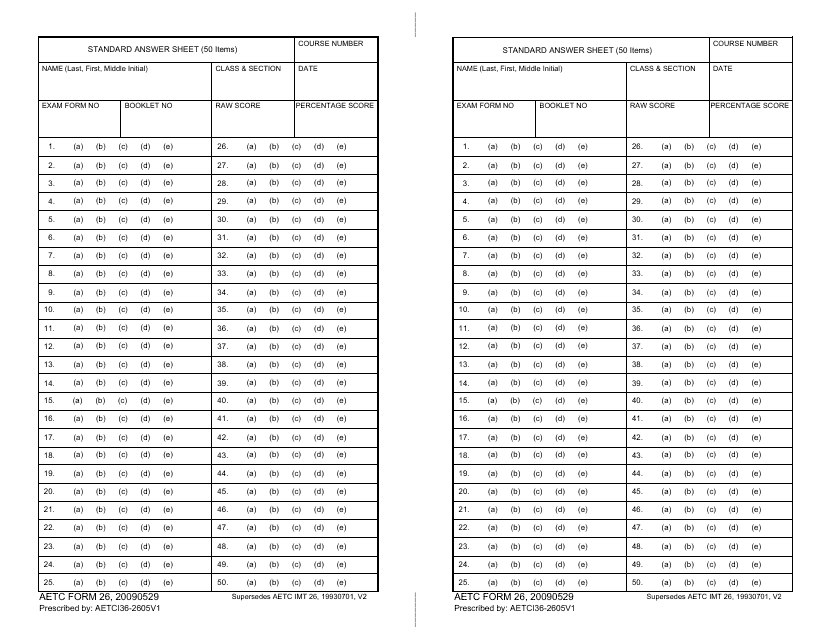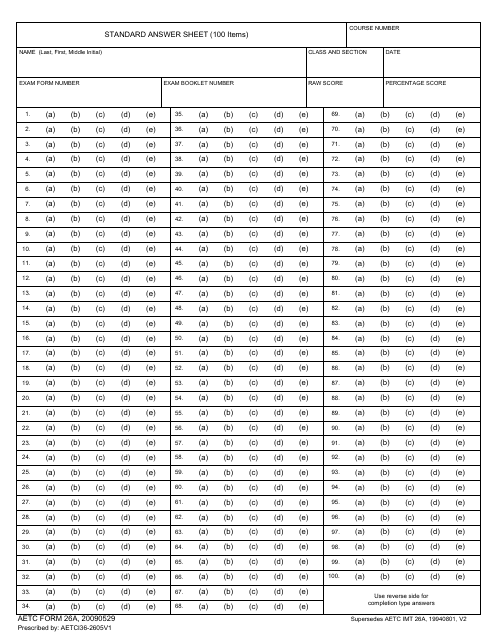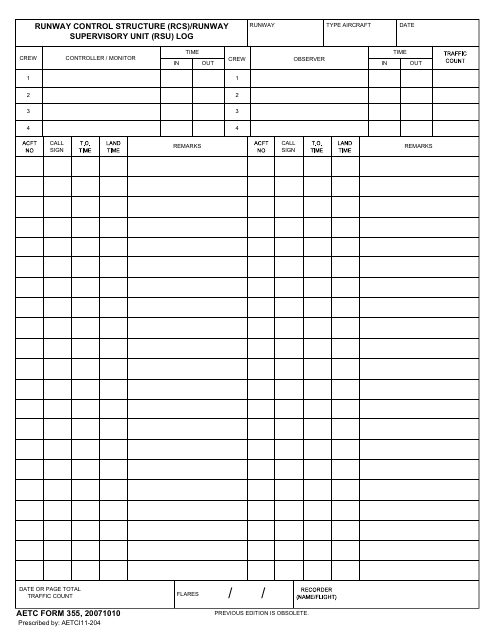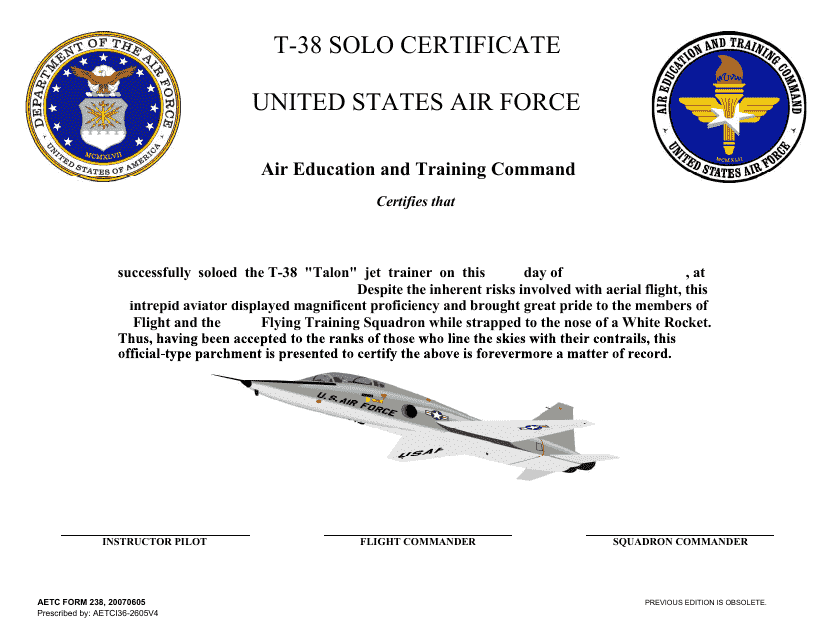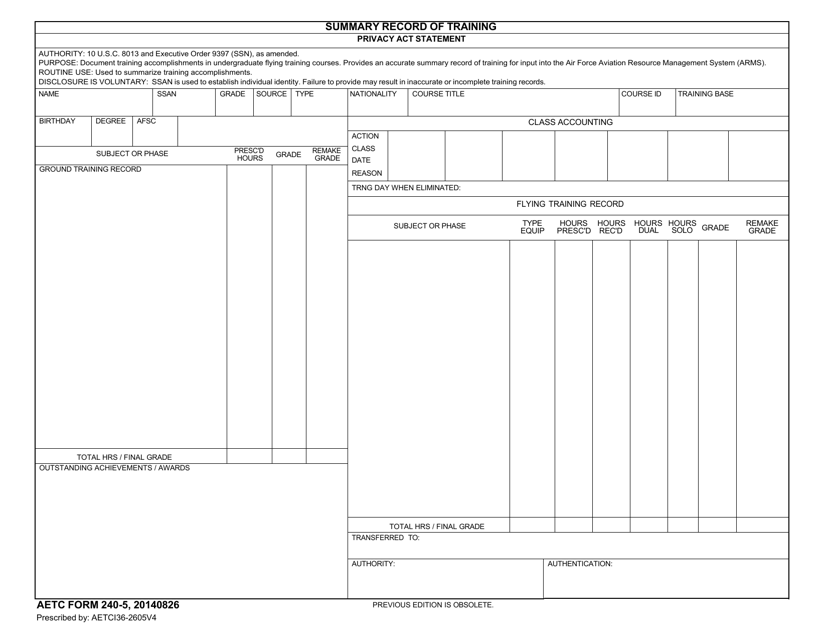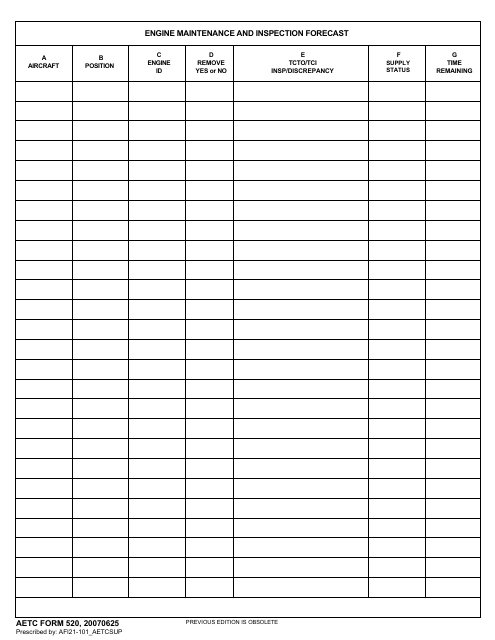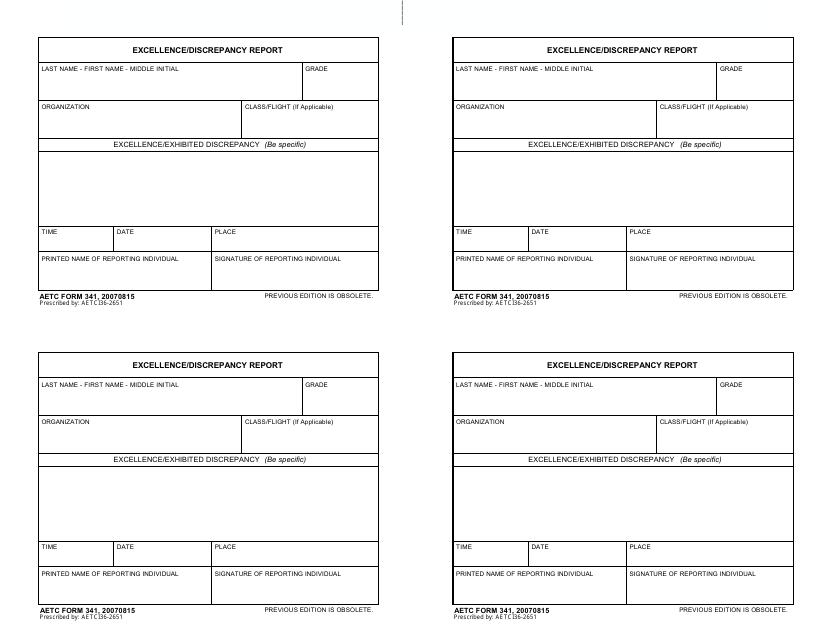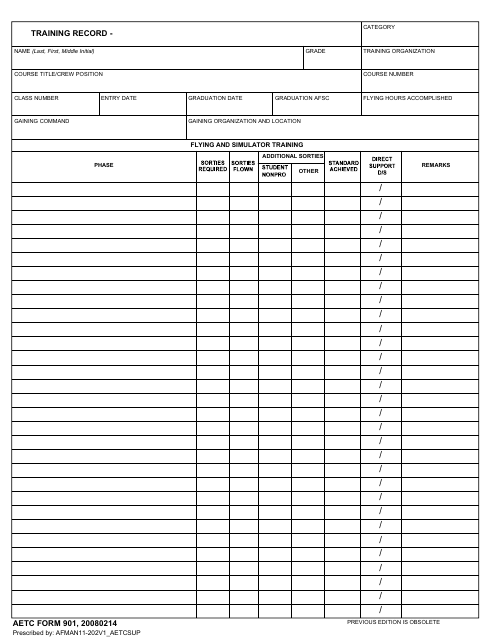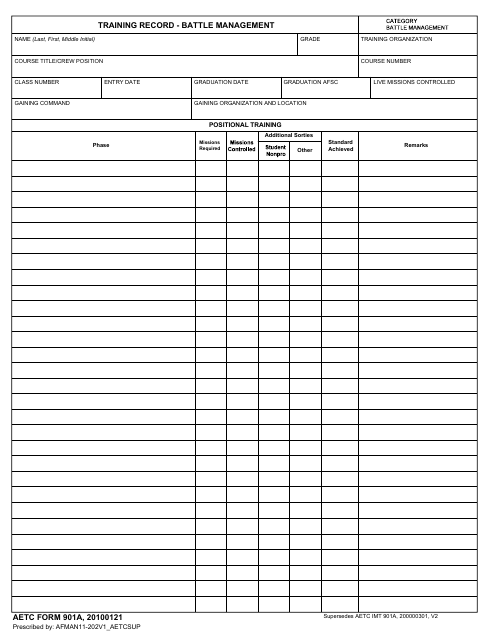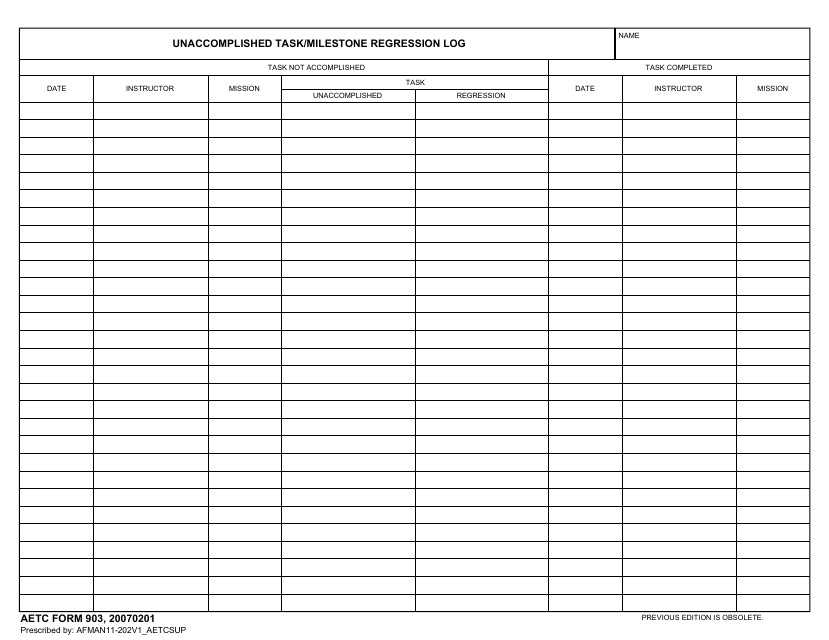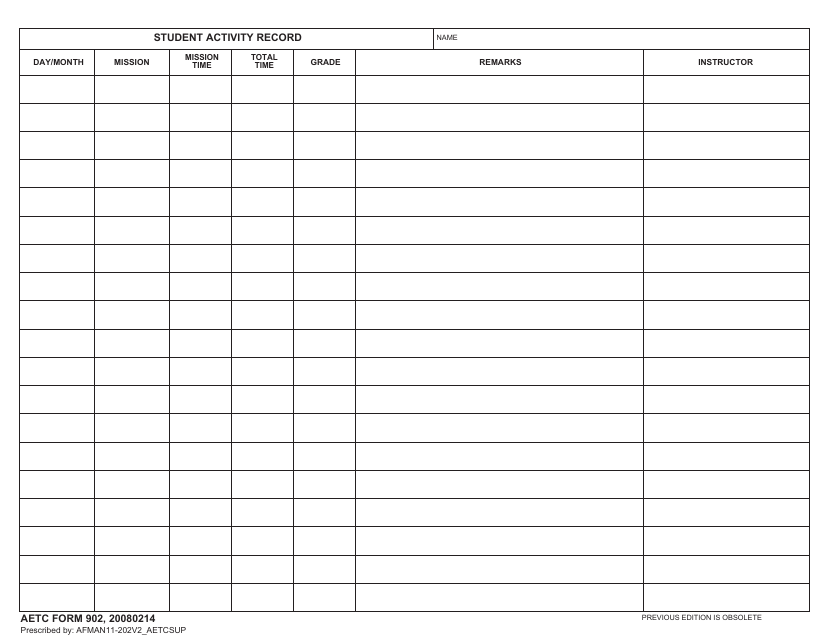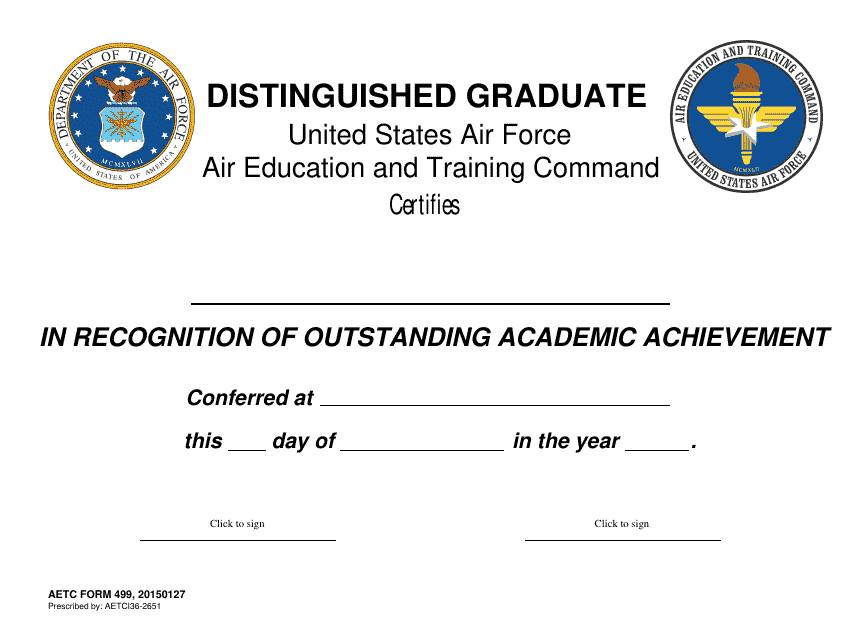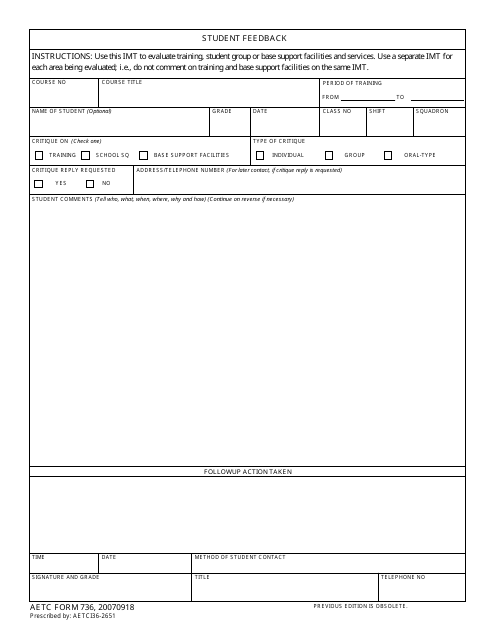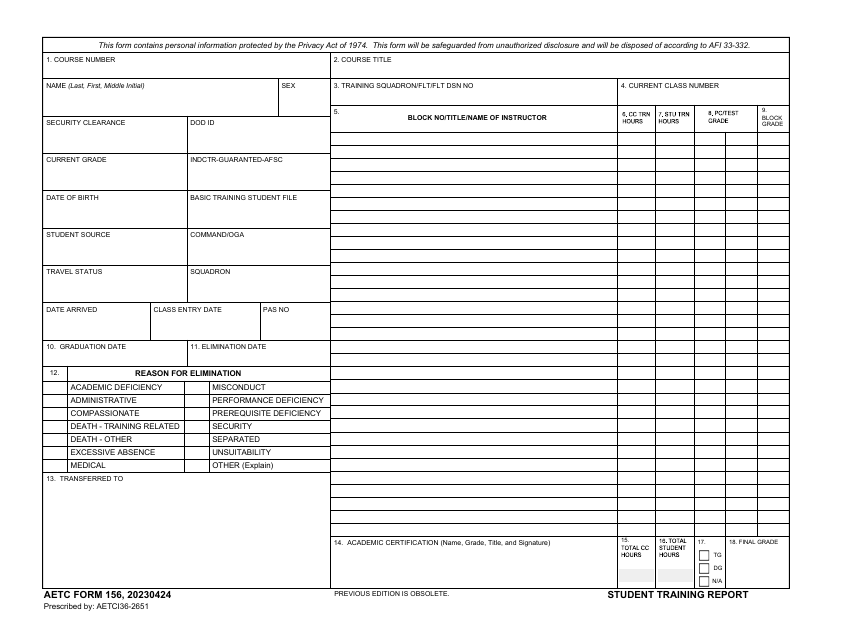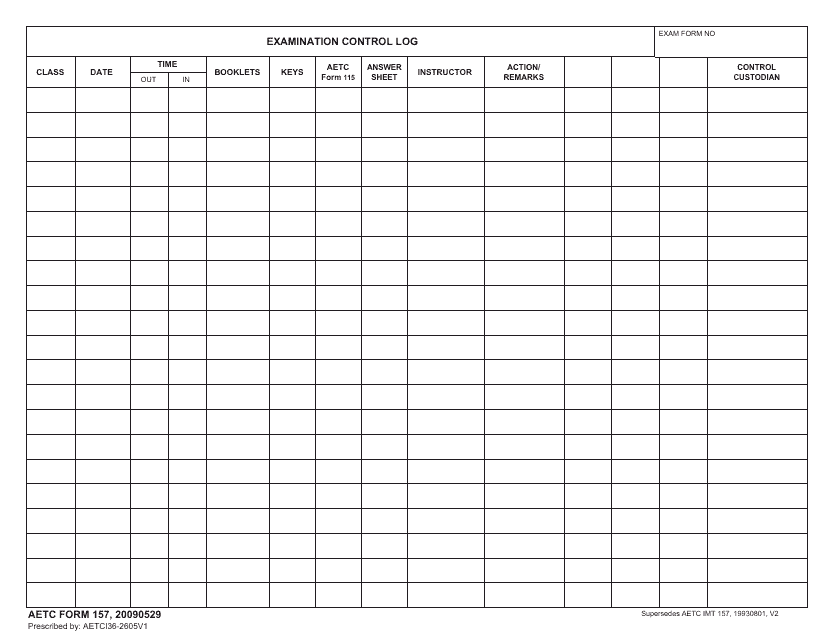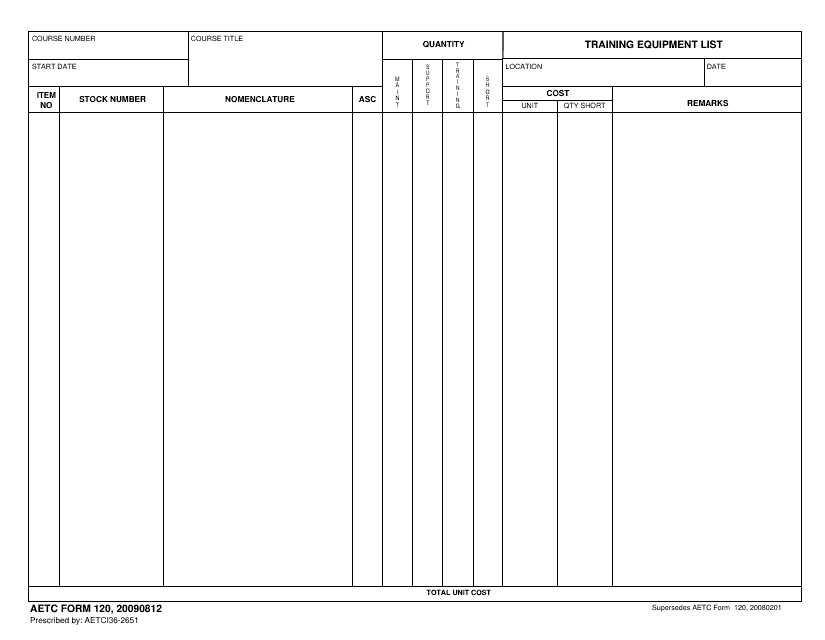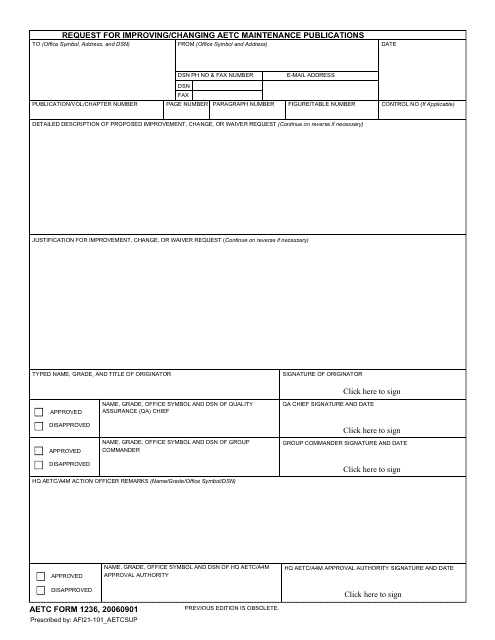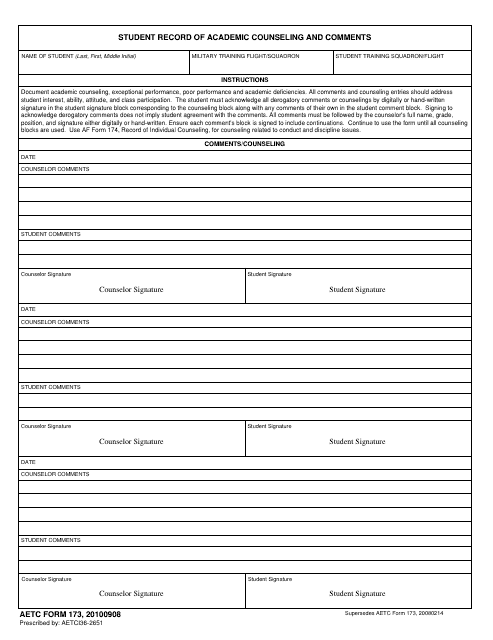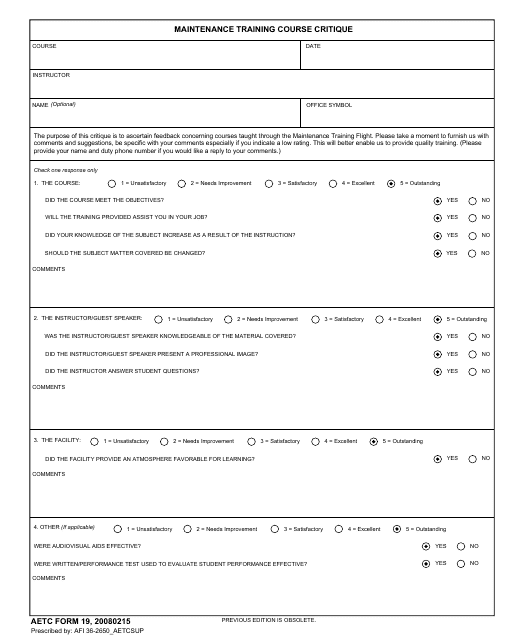Fill and Sign U.S. Air Force Forms
Documents:
1169
This document is used for performing a checklist for entry into confined spaces where a permit is not required. It ensures safety measures are followed during entry procedures.
This Form is used for estimating costs for a project or task.
This form is used for conducting an investigation on dropped objects. It is used to gather information and document the details of the incident.
This Form is used for investigating incidents of Foreign Object Damage (FOD) that occur within the 374th Airlift Wing (AW).
This document is used for recording and tracking maintenance information for the C-5 A/B aircraft.
This Form is used for completing fundraising worksheets for Vermont Wing activities.
This form is used for exchanging strategies with visitors at an encampment.
This form is used for conducting an investigation to find lost tools or items in the Air Education and Training Command (AETC). It helps track the details of the investigation and any pertinent information related to the lost item.
This form is used for recording the commander's review action in the Air Education and Training Command (AETC). It documents the decisions made by the commander regarding various actions and initiatives.
This form is used for controlling inspection workcards in the Air Education and Training Command (AETC).
This form is used for answering a standardized test or exam consisting of 50 items.
This document is used for AETC Form 26A Standard Answer Sheet which consists of 100 items.
This form is used for recording and tracking activities related to runway control structure and supervisory unit operations in the Air Education and Training Command. It ensures accountability of aircraft traffic on the runway and helps in better management of airfield operations.
This document certifies a pilot's completion of solo flight training in the T-38 aircraft.
This Form is used for documenting discrepancies in the runway control structure or runway supervisory unit. It helps to track and address any issues regarding these aircraft systems.
This form is used for creating a summary record of training in the Air Education and Training Command (AETC). It provides a comprehensive overview of an individual's training history and accomplishments.
This form is used for reviewing and assessing criteria for AETC programs.
This form is utilized by aircraft maintenance technicians in order to forecast and schedule necessary engine inspections and maintenance. It tracks essential information about the engine's usage and condition, aiding in proactive maintenance planning.
This form is employed by the Air Education and Training Command (AETC) to record and monitor training performance discrepancies and achievements in the U.S. Air Force. It also helps to identify any issues or talents during the training period.
This form is employed by the Air Education and Training Command (AETC) within the United States Air Force to keep track and document of an individual's training progress and assessment.
This document is used by the U.S. Air Education and Training Command (AETC) to track and record specific battle management training exercises. It's an essential tool for validating skill proficiency and monitoring progress among military personnel.
This form is used within the Air Education and Training Command (AETC) to log and track uncompleted tasks or milestones, providing a record for regression analysis. It aids in capturing the gaps in the training process and improves overall efficiency.
This form is used primarily by military institutions for recording and tracking a student's academic and extracurricular activities. It provides a comprehensive overview of an individual's involvement and progress in a given program or course.
This Form is used for recognizing exceptional achievement by graduates of the Air Education and Training Command (AETC) military training programs.
This form is used for collecting feedback from students in the Air Education and Training Command (AETC) about their educational experiences.
This form is used for determining the class status of individuals participating in survival training in the Air Education and Training Command (AETC).
This form is used for tracking and logging the control of examinations.
This form is used for creating a list of training equipment used by the Air Education and Training Command (AETC).
This form is used for requesting improvements or changes to AETC maintenance publications. It allows individuals to provide feedback and suggest modifications to these publications.
This Form is used for supervisors to provide feedback and critique on the performance of RCS/RSU personnel.
This document is used for keeping a record of academic counseling and comments for students.
This document is used for recording the medical disqualification of individuals participating in survival training.
This Form is used for critiquing the maintenance training course in AETC.
This form is used for investigating foreign object damage (FOD) incidents. It helps to identify the cause of the damage and prevent similar incidents in the future.

